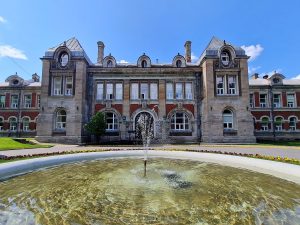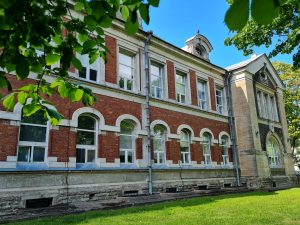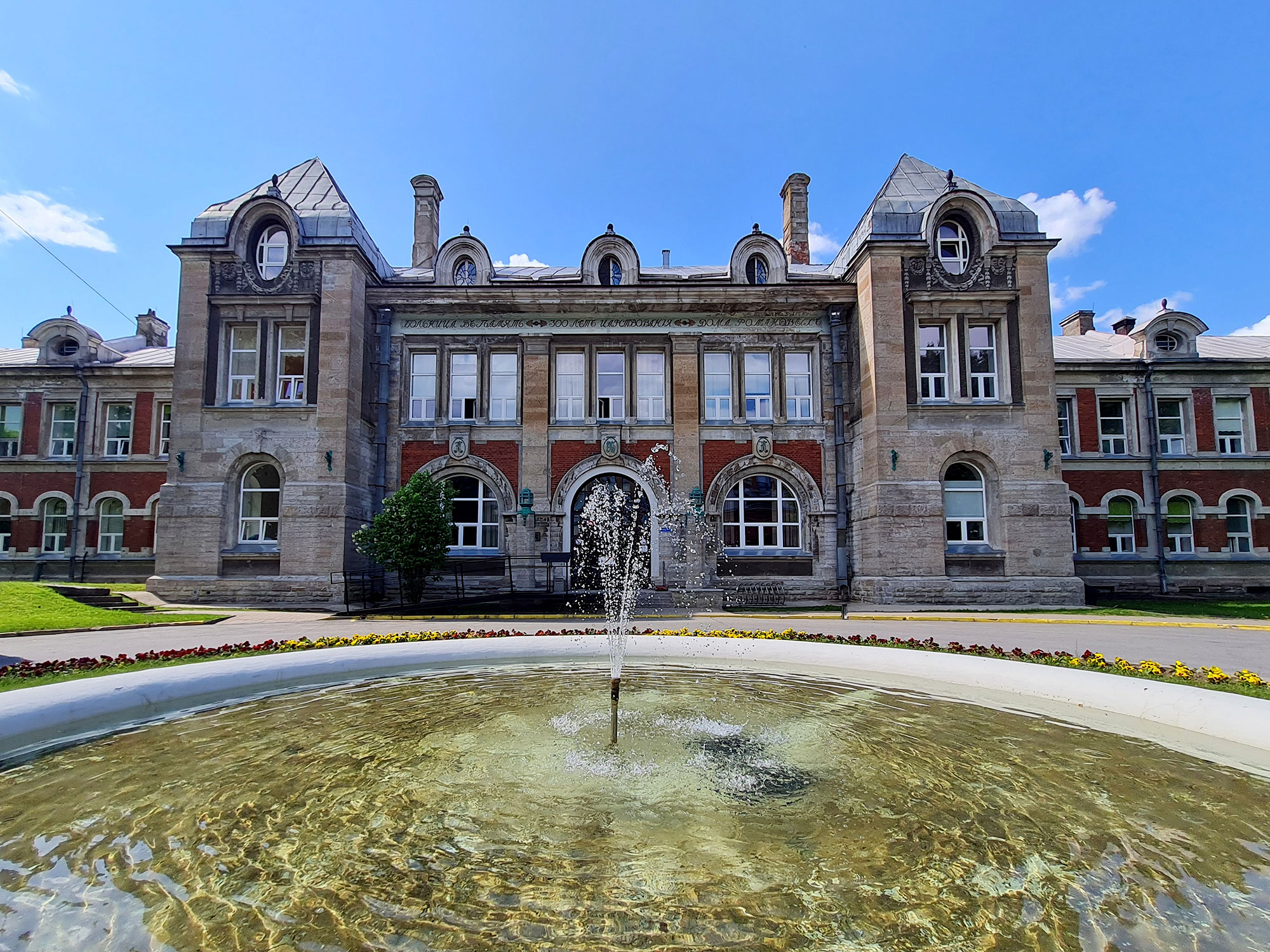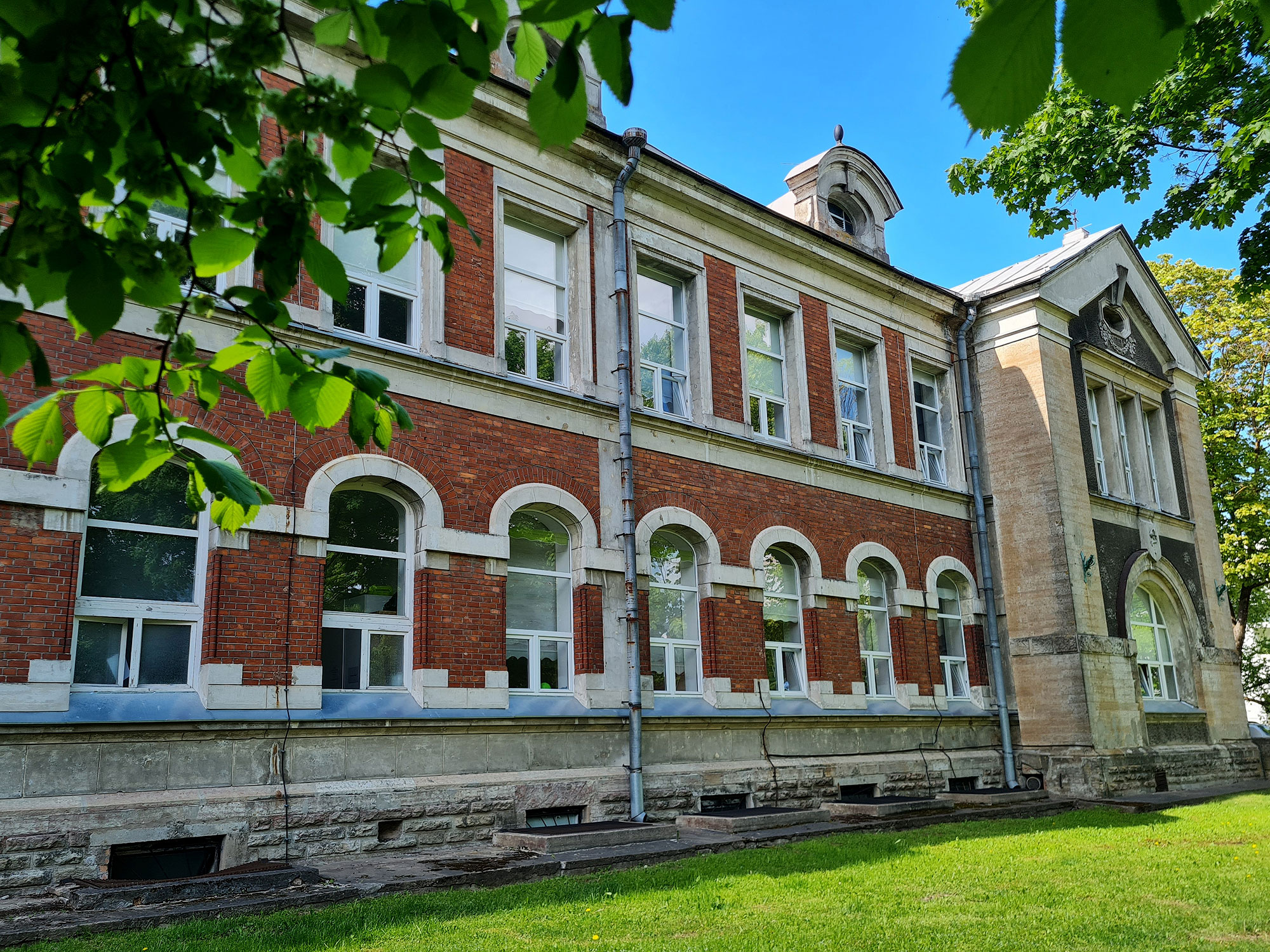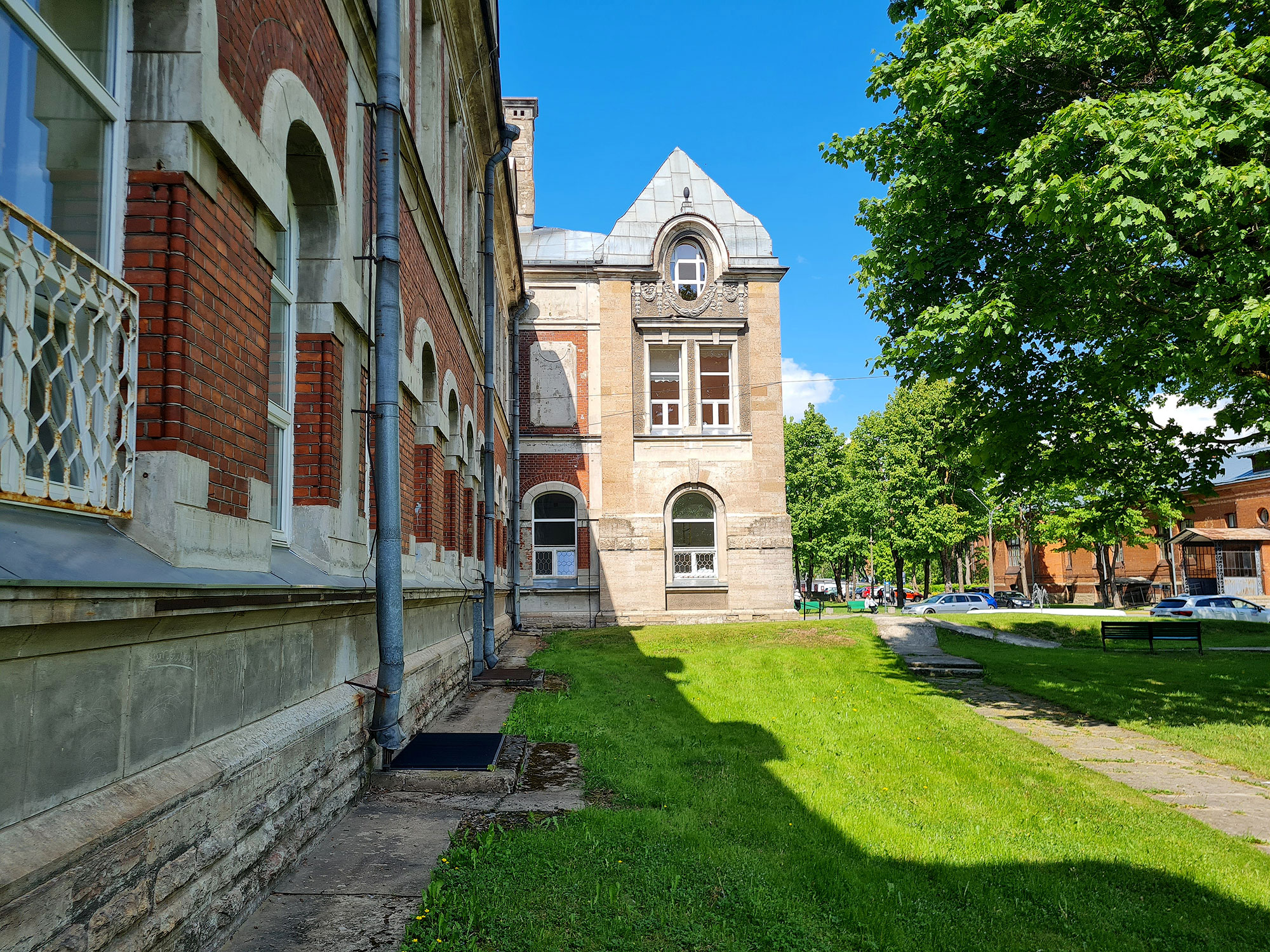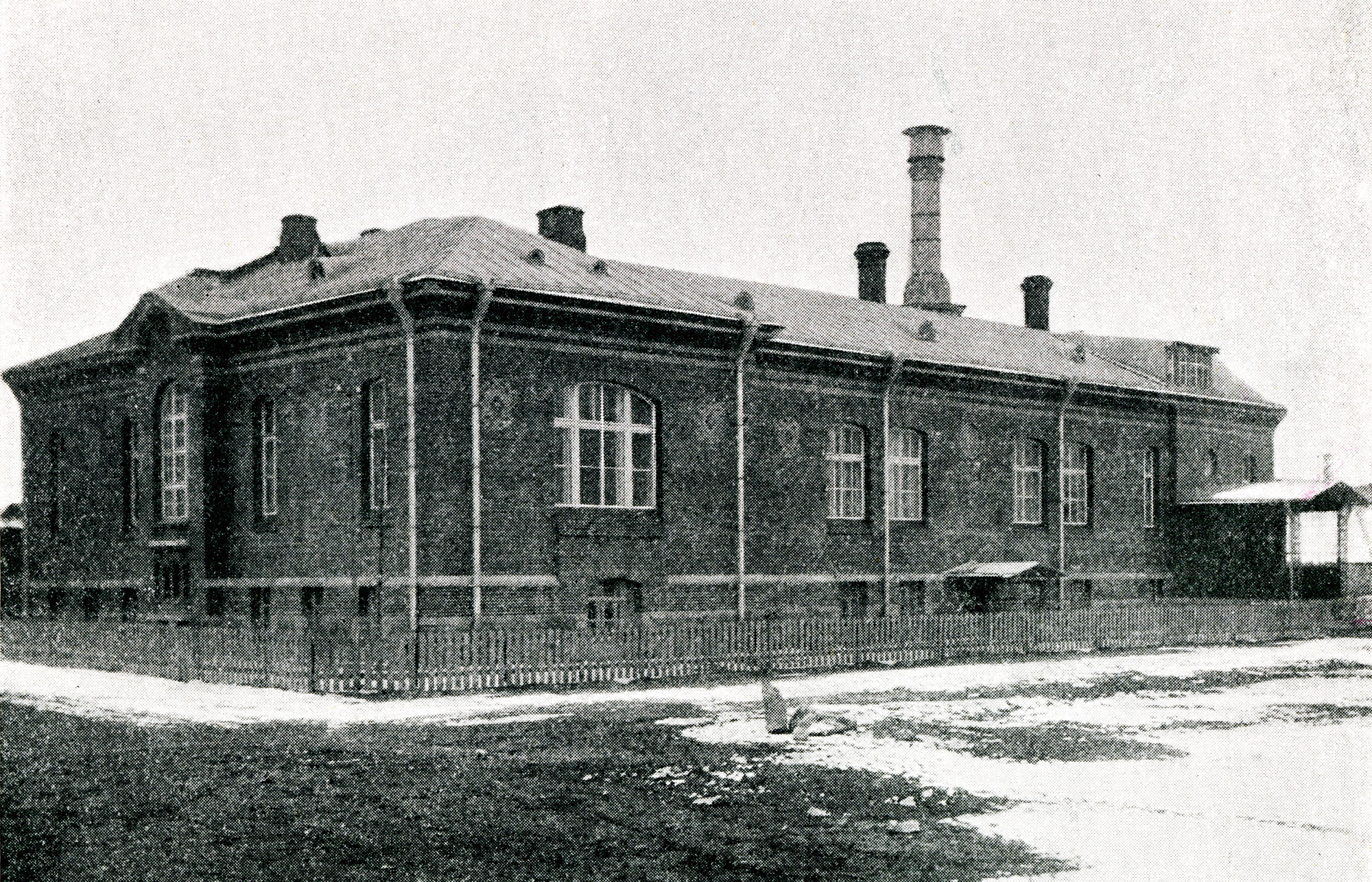Built in 1913 and dedicated to the 300th anniversary of the Romanov dynasty of Russian czars, Narva Hospital is the most beautiful Art Nouveau building in Estonia. Pay attention to the Russian text on the facade in honor of the royal family and the monograms of Czar Nicholai II on the hospital wall.
The 113-meter-long building with wings and a magnificent facade is decorated with towers, arches, oval windows, and various other details. You can see flagstone, brick and plastered surfaces on the facade of the building.
The architect of the building, which can easily be mistaken for a palace, is the factory architect Aleksandr Vladovski, who also designed the Juhkental military hospital building in Tallinn. Narva Hospital was the most modern hospital building in the Russian Empire. The mirrored ceiling and front wall of the operating room are still admired today. The building was also equipped with a lift.
The Narva hospital building was damaged in the war and its restoration was carried out under Vladovski’s supervision. Rumors has it that he broke his leg in the ruins and managed the restoration of the hospital building from a corner patient room of the same hospital.
The building has a gorgeous interior design. The lobby and the main staircase were restored in 2013 for the 100th anniversary of the building, the original colors were used in the color scheme of the stairwell, and a chandelier modeled after the original was installed on the ceiling.
Narva Hospital saw many famous patients. In January 1920 one of them was Konstantin Krupski, a brother of Lenin’s wife, Nadezhda Krupskaya. William Tomingas, the young secretary of the Foreign Minister Jaan Poska, wrote about him in his memoirs. His job was to find Krupski, who had been captured by Russian White Guardsmen in Gatchina. The Ivangorod fortress, where Tomingas found Krupski, was under their control. This was an important event in Estonian history because the text of the Tartu Peace Treaty was being finalized at that time, and the request had been submitted to Poska by Russian Foreign Minister Adolf Joffe himself.
“General Tõnisson took us in his car to Hotel New York near the railway station.” This building has survived and is still standing next to the railway station, where Ingria house is located now.
“I thanked the general by shaking both of his hands. Without him, I wouldn’t have gotten Krupski.
First, I took Krupski to the hotel dining room. He was very hungry, which I wasn’t surprised about. I translated the Estonian menu for him and encouraged him to choose as many dishes as his heart desired.
Krupski, who at first seemed intimidated, didn’t know if he could trust me and answered me with very few words. After his hunger was satisfied, he revived and got the courage to ask me where I was taking him and what was going to happen to him now. I replied that he would soon see. I got the impression that he was an educated person. Neither of us talked about political matters and the war.
After the meal I took Krupski to the barber and after that he looked quite decent again. Then we went to the “military hospital”, that is, the Kreenholm hospital. He was given a medical check-up there. He did not have any significant health problems. The purpose of taking Krupski to the hospital was to determine if there were any signs of beating or torture. My question was answered, there were no signs of violence on Krupski’s body.
